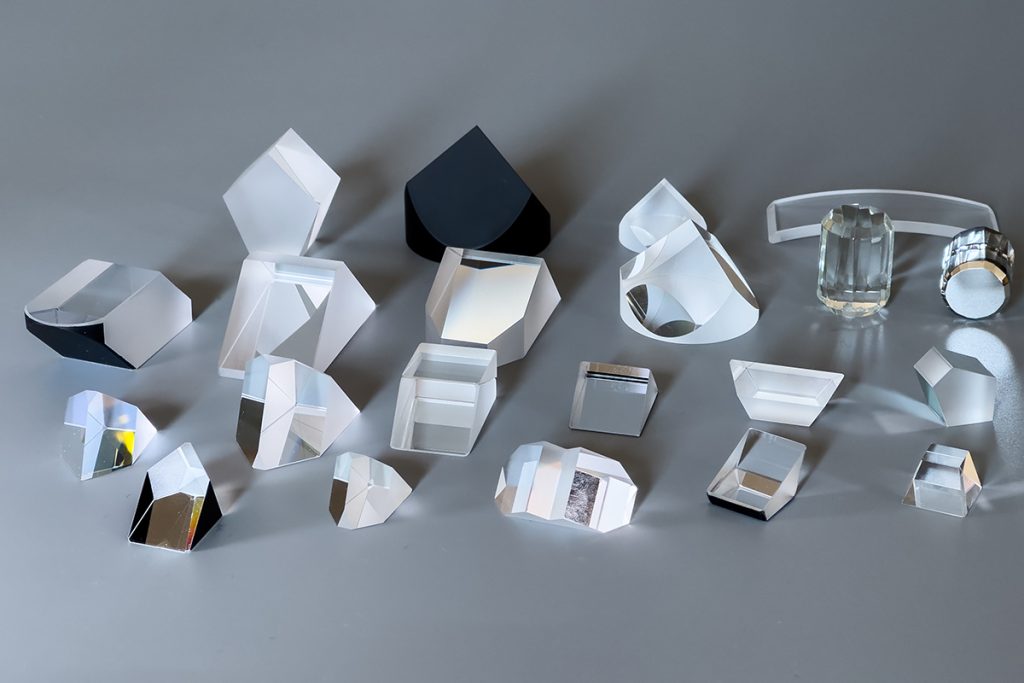As an ancient material, glass is used in architecture and the arts and is frequently employed in medicine, instrumentation, and other fields. Different types of glass exhibit distinct characteristics that must be considered when using them. However, many people lack sufficient understanding of glass, leading to misunderstandings and complications. In this article, we will analyze the various types of optical glass and introduce several coating methods for glass surfaces.

I. Different Types of Optical Glass
1. Clear Optical Glass
This type of glass has specific requirements for optical constants and features high transparency in the visible region with no selective absorption coloring. It is divided into crown and flint glasses based on Abbe numbers, further categorized into several types based on refractive index, arranged in order of increasing refractive index. Clear optical glass is commonly used in lenses, prisms, mirrors, etc., in telescopes, microscopes, cameras, and similar optical instruments.
2. Radiation-resistant Optical Glass
This glass exhibits a high absorption capacity for high-energy radiation. Examples include high-lead glass and CaO-B2O2 system glass. The former shields against gamma rays and X-rays, while the latter absorbs slow and thermal neutrons, primarily used in nuclear and medical industries as shielding and viewing window materials.
3. Radiation-tolerant Optical Glass
This type maintains relatively stable visible light transmittance under certain gamma-ray and X-ray radiation. It shares the same varieties and grades as clear optical glass and is used to manufacture optical instruments and viewing windows for high-energy radiation environments.
4. Colored Optical Glass
Also known as filter glass, this type selectively absorbs and transmits specific wavelengths in the ultraviolet, visible, and infrared regions. Based on spectral characteristics, it’s categorized into three types: selective absorption, cut-off, and neutral gray. Based on coloring mechanisms, it’s categorized into ion coloring, metal colloid coloring, and sulfur-selenium compound coloring. Colored optical glass is mainly used in filter manufacturing.
5. Ultraviolet and Infrared Optical Glass
This glass has specific optical constants and high transmittance in the ultraviolet or infrared spectrum, used in ultraviolet, and infrared optical instruments, or as window materials.
6. Optical Quartz Glass
Mainly composed of silica, it possesses characteristics like high-temperature resistance, low expansion coefficient, high mechanical strength, and good chemical properties. Optical quartz glass is used to manufacture prisms, lenses, windows, and mirrors with special transmission requirements for various wavelength bands.
Additionally, there are glass products such as optical mask plates for large-scale integrated circuit manufacturing, liquid crystal display panels, and image optical disk substrates. There are also magneto-optical glasses where light polarization rotates along magnetic lines, and acoustic-optical glasses where light undergoes diffraction, reflection, convergence, or frequency shift when transmitted along certain directions of ultrasonic waves.
II. Four coating methods for glass surfaces
Coating involves applying a very thin transparent film on the surface to reduce light radiation. There are several methods for producing coated glass, including vacuum magnetron sputtering, vacuum evaporation, chemical vapor deposition, and sol-gel processes.
1.Magnetron Sputtering Coating Glass
This method uses magnetron sputtering technology to design and manufacture multilayer complex film systems. It can produce various colors on white glass substrates, with good corrosion resistance and wear resistance in the film layers, making it one of the most widely used products in production and use.
2. Vacuum Evaporation Coating Glass
The variety and quality of glass produced by vacuum evaporation coating are slightly inferior to magnetron sputtering coating glass and have gradually been replaced by the latter.
3. Chemical Vapor Deposition
This method introduces reaction gases into the hot glass surface during float glass production, depositing them uniformly to form coated glass. Its advantages include low equipment investment, easy control, low product costs, good chemical stability, and suitability for thermal processing, making it one of the more promising production methods.
4. Sol-Gel Coating Glass
This method has a simple production process and good stability but tends to have higher light transmittance than other methods, resulting in poorer decorative properties.